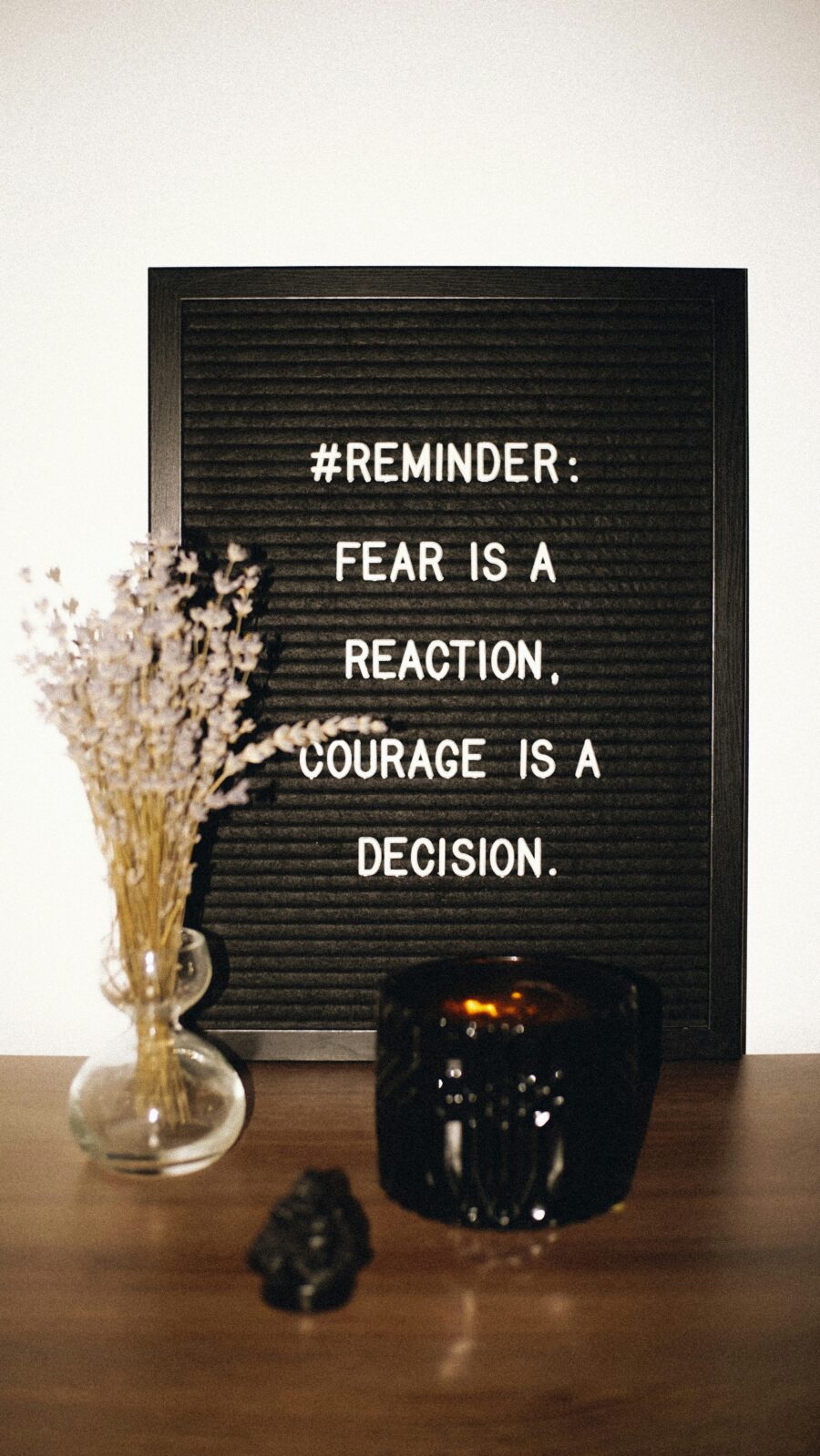F.E.A.R.: How to Stop Letting Fear Run Your Life
What If Fear Isn’t the Enemy—But the Messenger?
You’ve probably heard the acronym before: F.E.A.R. = False Evidence Appearing Real.
It’s catchy for a reason. Fear often arises not from real danger, but because our brain confuses discomfort or uncertainty with a threat. And when we don’t pause to question it, fear runs the show.
It tells you not to apply for the job, not to speak up, not to love again, not to rest. It whispers that you’re not ready, not good enough, not strong enough. Fear makes you think that being small is safer than risking your true self.
But what if fear is more than just a wall? What if it’s a doorway?
The Biology of Fear (and Why It’s Not Always a Bad Thing)
We are wired with fear for survival. In actual danger—say, avoiding a speeding car or reacting to a fire—it helps us act fast and stay alive. But our minds aren’t great at knowing the difference between real threats and imagined ones.
In modern life, fear tends to attach itself to things like:
-
Public speaking
-
Vulnerability in relationships
-
Career changes or creative risks
-
Setting boundaries
-
Facing emotional pain
Fear can be misleading. It often confuses discomfort with real danger. This happens when we mistake false evidence for reality.
The Cost of Letting Fear Make Your Decisions
When fear is behind the wheel, life starts to shrink. You say no to opportunities that excite you. You stay in relationships or situations that drain you. You avoid conflict, change, or even joy—because joy means something could be lost.
Living from fear often leads to:
-
Chronic anxiety or self-doubt
-
Perfectionism and overthinking
-
Missed opportunities and regret
-
Disconnection from your true self
You may even stop dreaming entirely, because it feels safer not to want.
But here’s the truth: A fear-based life isn’t a safe life—it’s a small one.
What Fear Really Needs from You
You don’t need to eliminate fear. You just need to listen to it differently.
Fear is often the nervous system’s way of saying, “This feels unfamiliar” or “I don’t want to get hurt again.” Beneath it is a younger part of you. This part learned it wasn’t safe to take up space, speak honestly, or try and fail.
What fear needs isn’t your obedience—it needs your curiosity and your care.
How to Keep Fear From Running Your Life
The next time you notice fear rising, try this simple process:
-
Feel It. Don’t numb or override it. Name it. “This is fear.” Notice where it lives in your body. A tight chest? Shaky hands? A pit in your stomach?
-
Examine the Evidence. Ask: “What story am I telling myself right now?” Is this fear based on facts—or on a pattern of self-protection?
-
Affirm Your Safety. Remind yourself: “Discomfort isn’t danger. Growth feels scary because it’s unfamiliar—not because it’s wrong.”
-
Respond With Intention. Decide: “What action aligns with who I want to be, not just what I want to avoid?” Let values—not fear—guide your next step.
-
Reframe the Acronym. Try this version instead: F.E.A.R. = Face Everything And Rise. It’s not just a motivational quote—it’s a mindset.
You Are Bigger Than Your Fear
Fear is part of being human. But it doesn’t have to define your path. You can learn to hear fear without obeying it. You can move forward even with shaky hands. You can live more fully—even if it feels terrifying sometimes.
That’s courage. And courage doesn’t mean you’re not afraid. It means you keep showing up anyway.
Ready to Stop Letting Fear Call the Shots?
If fear holds you back, therapy can help. It can untangle the roots of your fear and reshape your relationship with it. This new approach can give you more choice, freedom, and a deeper connection to your true self.
Let’s explore what life looks like when fear doesn’t get the final say. Reach out for a free 15-minute consultation today. You don’t have to face fear alone.


Leave a Reply